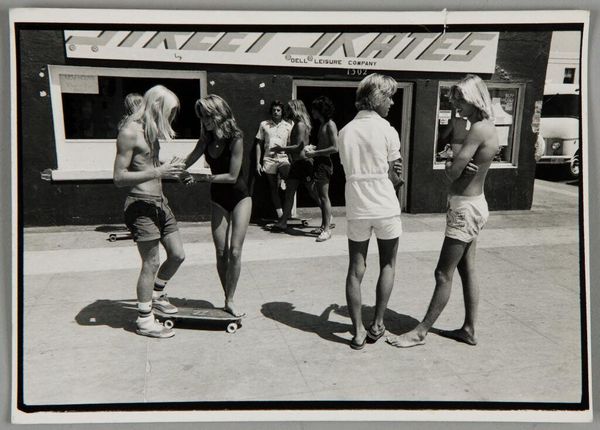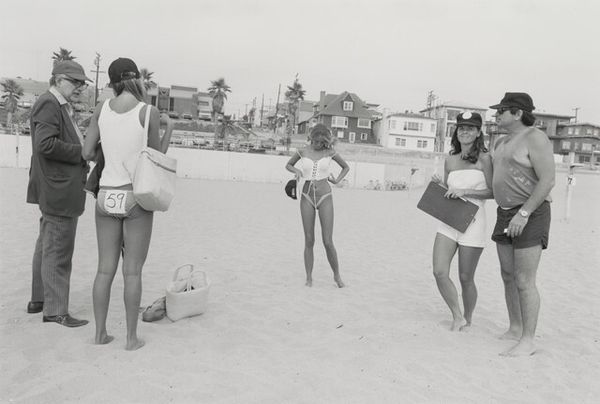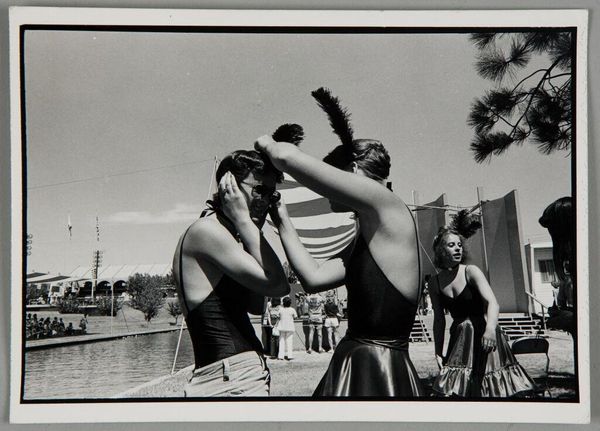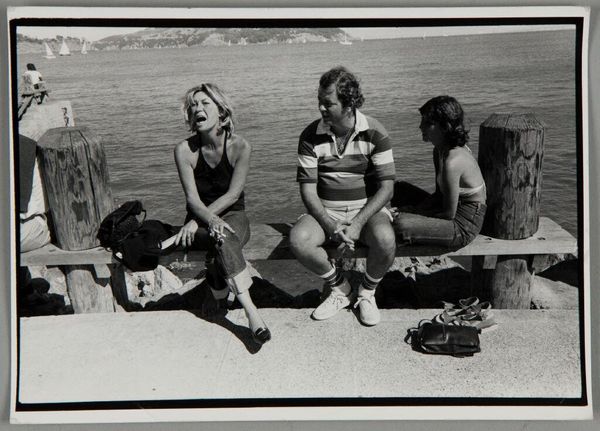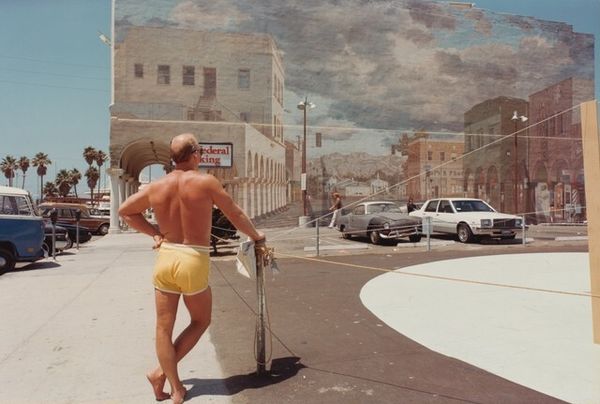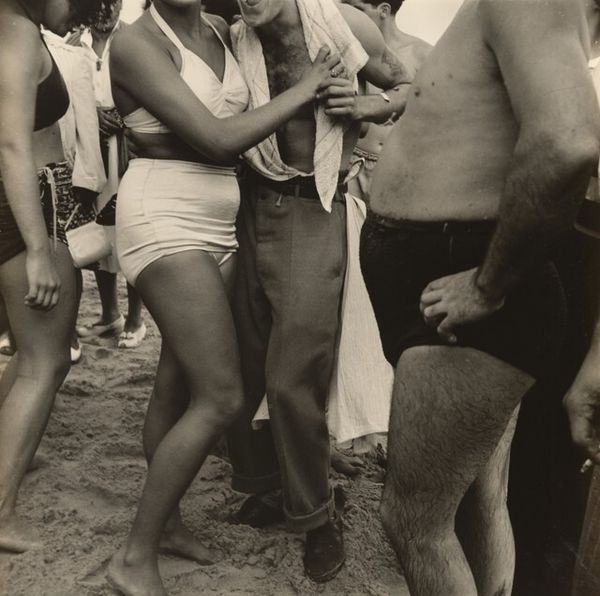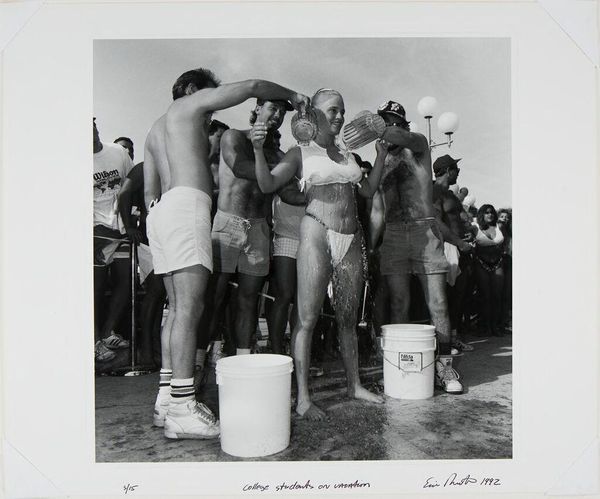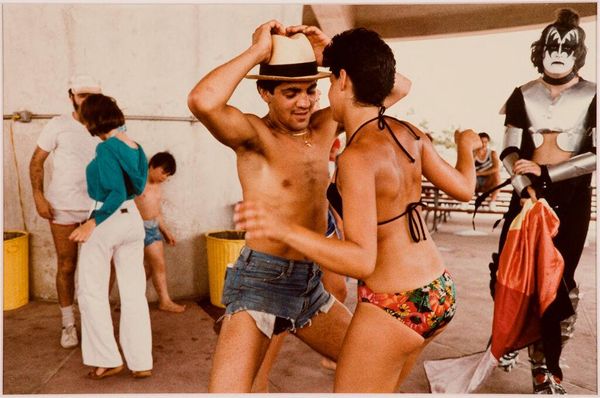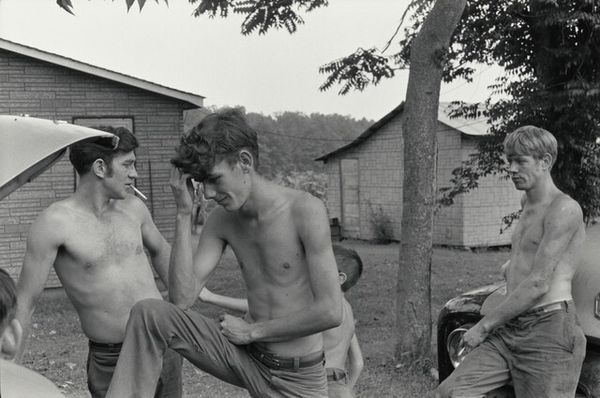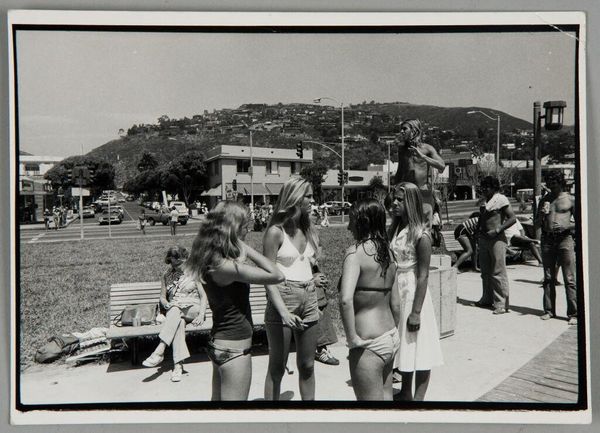
photography, gelatin-silver-print
#
portrait
#
contemporary
#
black and white photography
#
black and white format
#
street-photography
#
photography
#
gelatin-silver-print
#
monochrome photography
#
cityscape
#
realism
#
monochrome
Dimensions: image: 27.94 × 40.64 cm (11 × 16 in.) sheet: 35.56 × 42.86 cm (14 × 16 7/8 in.)
Copyright: National Gallery of Art: CC0 1.0
Curator: This black and white photograph, simply titled "Manhattan Beach," was captured by Tod Papageorge in 1978. He worked with gelatin-silver print. Editor: My first impression is one of candid awkwardness. The scene is busy but the individuals seem disconnected, captured in these raw, unposed moments. The starkness of the monochrome contributes to the gritty feel. Curator: I see that. Papageorge often sought to capture the everyday realities of urban life. Examining it through the lens of intersectionality, there's a clear socioeconomic story unfolding. The beach, typically a site of leisure, is presented with working class interactions in full view. We see varying body types and expressions that feel real, and that really democratizes representation. Editor: Definitely, the lack of glamorization contributes to that raw feeling. But the symbols, like the beach service menu with prices frozen in time and the logo of the Royal Crown cola brand, work like hieroglyphs, evoking specific associations for certain viewers rooted in nostalgia. Curator: And gender too, is at play here. You notice the overt gazes. The group of younger girls seemingly together are almost being exhibited. Editor: Indeed. It is impossible to separate gender from that reality. Their expressions communicate boredom or the quiet experience of being exposed. There's a story about visibility and vulnerability that emerges when you really consider this as more than just an image of beachgoers. Curator: I agree. What began as a snapshot of a moment reveals how historical forces, gender dynamics, and even economics can become etched into a single image. Editor: For me, it’s an invitation to decode the iconography of the late 70s. An artifact that carries layers of cultural meaning we’re still unpacking today.
Comments
No comments
Be the first to comment and join the conversation on the ultimate creative platform.
